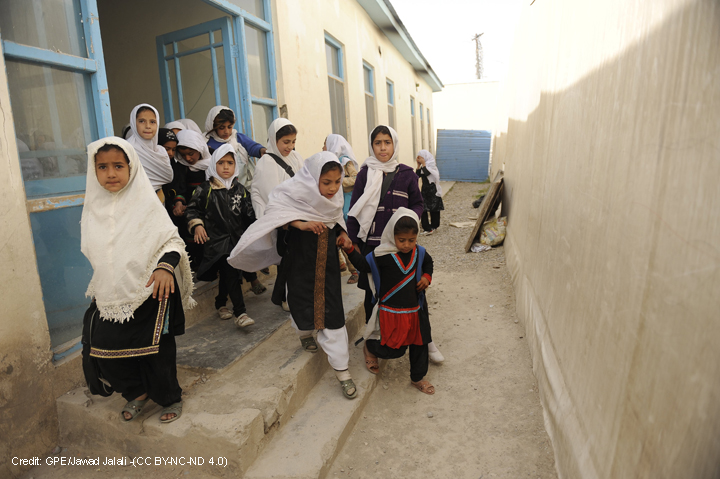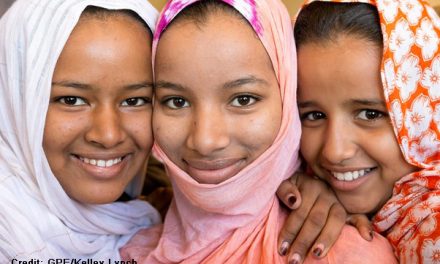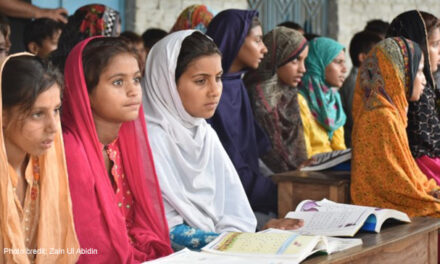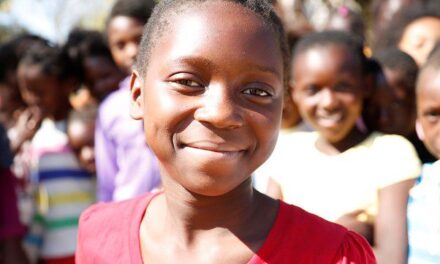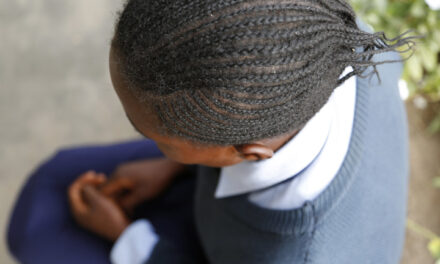This blog was written by Ruth Naylor, Lead Advisor, Research with the Education Development Trust. It was originally published on the Education Development Trust website on 21 June 2021.
While many parts of the world have witnessed significant progress in girls’ education and refugee education in recent years, access to learning remains a critical challenge for refugee girls. In this commentary, we reflect on key learnings from a recent research report published by the Inter-Agency Network for Education in Emergencies (INEE), which specifically considers the state of girls’ education in crisis and conflict situations.
Combined global efforts over recent decades have led to huge progress in both girls’ education and refugee education. But education for refugee girls lags far behind. This is the case both when we consider the education of refugee girls in relation to other girls and when we consider the comparative disadvantage they face to refugee boys. As an illustration, in Ethiopia in 2019, only 7% of refugee girls attended secondary school, compared to 17% of refugee boys, and 30% of non-refugee girls.
In a recent report we wrote for the Inter-Agency Network for Education in Emergencies (INEE) on the State of Girls’ Education in Crisis and Conflict, we highlighted that even before the Covid-19 crisis, only 27% of refugee girls attended secondary school, compared to 36% of refugee boys. What is more concerning the slow rate of progress, with boys accounting for almost all of the increase in refugee enrolment in secondary education from 2018 to 2019. Moreover, our research found predictions that the impacts of the pandemic could cause half of all refugee girls who were in secondary school before the crisis to drop out.
For those in school, the quality of education they experience is often very poor, with huge class sizes and an acute shortage of qualified teachers. As a result, many refugee girls who attend school are not learning even the basics. According to the results of a citizen-led learning assessment in the refugee settlement areas in northern Uganda, more than 90% of children in grade 3 were unable to read, with girls’ learning outcomes often lagging behind those of boys.
Moreover, in some refugee contexts, gender discrimination, gender-based violence and cultural restrictions on girls’ movement make it difficult for girls to learn in the same classrooms as boys. In these situations, girls-only learning spaces are needed. The Kenya Equity in Education Project, for example, supported by the Girls Education Challenge, provides after-school remedial classes in which girls can catch up on missed learning and ask questions without fear of being judged by boys. Similarly, in response to high dropout rates among adolescent Rohingya girls living in the refugee camps in Cox’s Bazaar, Bangladesh, caused by restrictive gender norms and bullying, UNICEF has piloted girls’-only classes.
Such responses can be highly valuable, but more sustainable solutions must involve making mainstream schools and classrooms accessible and responsive to the needs of refugee girls. Among other things, this means ensuring that there are enough female teachers. A video developed by IIEP, in partnership with Education Development Trust, which was released this week tells the stories of three South Sudanese refugees teaching in Ethiopia, all committed to girls’ education, and all aware of the need for female teachers for refugee girls to turn to for help. However, in that region, less than 5% of teachers of refugees are female, largely because so few refugee girls complete their secondary education. Looking at the classes in the video, which was filmed in 2021, it is sometimes hard to even spot the girls. This only highlights that unless we take action now to close the gap, the vicious cycle of lack of education for refugee girls’ and lack of female teachers to teach them is set to continue.
To find out more, the full report is accessible here and a policy brief available here. To find out more about our work in girls’ education, please click here.
Note on the author: From observing open-air lessons in South Sudan to crunching education data in spreadsheets, understanding how to help marginalised children learn, especially girls and children affected by conflict, has been the driving motivation behind Ruth’s career. Moving from teacher, to trainer, to researcher and adviser, Ruth is now Education Development Trust’s expert on girls’ education, education in conflict affected countries, and monitoring and evaluation in education development.

